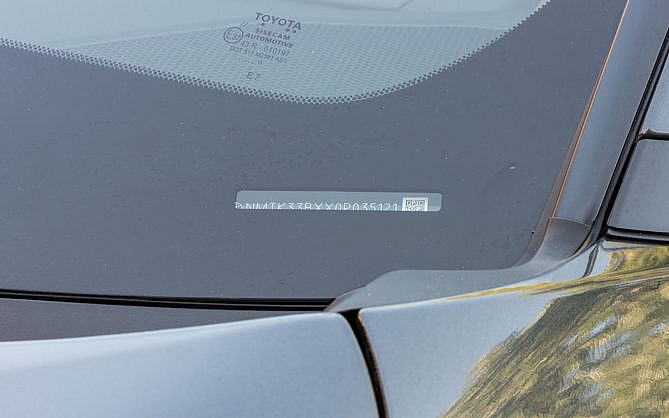Where To Find The Colour Code Of Your Car

For decades, the quest to find your car's colour code has been a rite of passage for any vehicle owner undertaking repairs or customizations. Traditionally, this meant scouring door jambs, engine bays, or glove compartments, hoping to decipher a cryptic combination of letters and numbers. While these methods still hold true for many vehicles, the evolving automotive landscape, driven by electrification, advanced technology, and increasingly sophisticated manufacturing processes, is changing how we access and utilize this seemingly simple piece of information. Let's explore how this is transforming and what the future holds.
The Current Landscape: Still a Treasure Hunt?
While the basic process remains largely unchanged for older vehicles, manufacturers are beginning to streamline the location and accessibility of the colour code. More modern cars often feature a clearly labelled sticker, sometimes even with a QR code, linking to an online database with specific vehicle information, including the paint code. However, consistency remains an issue. Different manufacturers still use varying locations and labelling systems, making the search a potentially frustrating experience. The rise of electric vehicles (EVs) and hybrid systems doesn't inherently alter the physical location of these codes, but it does impact the overall vehicle ecosystem and the way data is managed.
The Digital Revolution: Connected Cars and Cloud-Based Data
The most significant shift lies in the increasing connectivity of modern vehicles. As cars become rolling computers, equipped with sophisticated sensors and communication systems, the potential for accessing vehicle information digitally is immense. Imagine a future where the colour code, along with a wealth of other data, is readily available through a mobile app linked to your car's VIN. This could eliminate the need for physical searches altogether, providing instant access to accurate and reliable information. Furthermore, cloud-based platforms could aggregate this data, allowing paint suppliers and repair shops to quickly identify the correct colour formula based on the VIN, ensuring a perfect match every time. This is particularly crucial for EVs, which often utilize specialized paint formulations designed to enhance thermal management or aerodynamic performance. This interconnectedness isn’t without its challenges. Data security and privacy are paramount concerns, and robust systems must be in place to prevent unauthorized access and misuse of vehicle information.
Electric Vehicles and the Future of Paint Technology
The transition to electric vehicles is also driving innovation in paint technology. As manufacturers strive to improve efficiency and range, they are exploring new paint formulations that offer improved aerodynamics, thermal reflectivity, and even self-healing properties. These advanced coatings often require precise application techniques and specialized repair processes. Accessing the correct colour code becomes even more critical to ensure that repairs maintain the vehicle's performance characteristics and aesthetic appeal. Hybrid systems, with their complex interplay of internal combustion engines and electric motors, also demand paints that can withstand a wider range of operating temperatures and environmental conditions. Furthermore, the sustainability focus of EVs is pushing for the development of eco-friendly paints with lower VOC emissions and increased use of renewable resources. These factors all contribute to the growing importance of accurate colour code identification and access.
Smart Automotive Solutions and the Role of AI
Artificial intelligence (AI) is poised to play a significant role in the future of automotive paint. AI-powered systems could analyze images of a vehicle to identify the colour code, even if the original label is missing or damaged. These systems could also predict potential paint degradation based on environmental factors and usage patterns, allowing for proactive maintenance and repair. Imagine an AI that alerts you to the optimal time to apply a protective coating to prevent fading or chipping, based on your vehicle's location, usage, and the specific paint formulation. The possibilities are vast. However, the implementation of AI also requires careful consideration. Ensuring accuracy, avoiding bias, and addressing potential security vulnerabilities are crucial steps in developing reliable and trustworthy AI-powered solutions.
Challenges and Considerations
While the future of accessing your car's colour code looks promising, several challenges need to be addressed. Standardizing data formats and communication protocols across different manufacturers is essential for seamless integration with third-party applications and services. Ensuring data security and protecting user privacy are paramount concerns. Furthermore, bridging the gap between legacy systems and emerging technologies will be crucial for ensuring that older vehicles are not left behind. The cost of implementing these advanced solutions also needs to be carefully considered, ensuring that they are accessible to a wide range of vehicle owners. Overcoming these challenges will require collaboration between manufacturers, technology providers, and regulatory bodies.
A Vision for the Future: Seamless and Intelligent Access
Looking ahead, the process of finding your car's colour code will become increasingly seamless and intelligent. Imagine a future where your car automatically transmits its colour code to your preferred repair shop when you schedule a service appointment. Or a world where AI-powered systems can instantly identify the correct paint formula based on a simple photograph, regardless of the vehicle's age or make. The era of tedious searches and cryptic codes is coming to an end. We are entering an age of connected cars, intelligent data management, and advanced paint technologies, where accessing vital vehicle information is as simple as asking a question. This future is not just about convenience; it's about creating a more efficient, sustainable, and personalized automotive experience for everyone. The very concept of color itself might even evolve, with dynamically shifting hues and user-customizable finishes becoming the norm, all managed and controlled through sophisticated software and AI. The future of mobility is not just about how we get from point A to point B; it's about the experience of the journey itself, and color, in all its technological glory, will play a central role.
